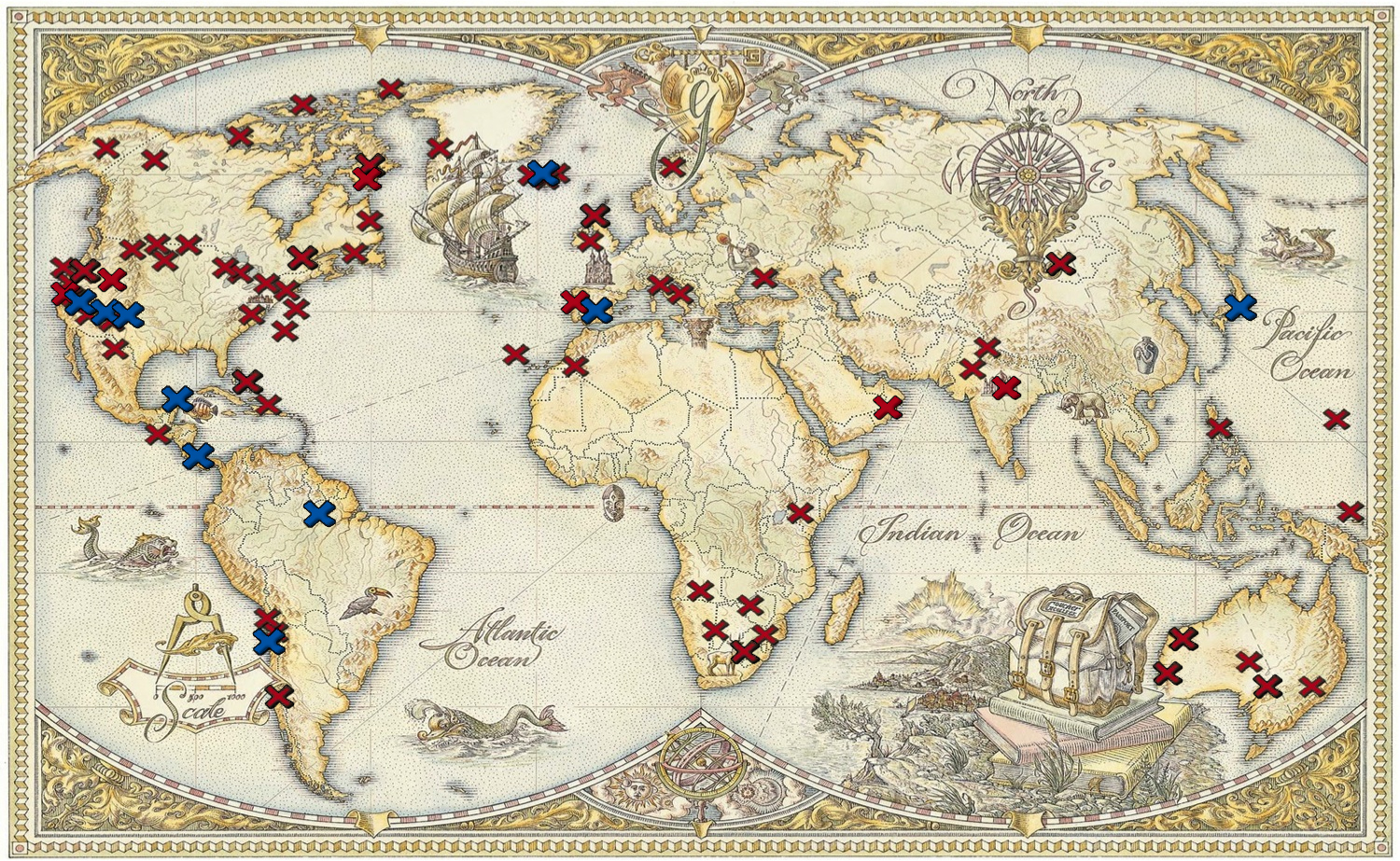-
2016 Selections for the Lewis and Clark Fund for Exploration and Field Research in Astrobiology
July 15, 2016 / Written by: NASA Astrobiology Institute (NAI)
Map of locations explored by past and present Lewis and Clark Fund recipients. Blue Xs mark 2016 field research destinations.The NASA Astrobiology Institute and the American Philosophical Society are pleased to announce the selections for the 2016 Lewis and Clark Fund for Exploration and Field Research in Astrobiology. These graduate students, postdocs, and early-career scientists listed below will embark on field studies in astrobiology at destinations from Chile to Iceland and New Mexico to Japan.
Joany Babilonia
University of Florida
Project: Unraveling the Global Microbiome Core of Stromatolites
Location: Ruidera Pool, SpainMegan Bedell
University of Chicago
Project: Exploring the Formation of Rocky Worlds with the Solar Twin Planet Search
Location: HARPS Spectrograph, ChileSarah Black
University of Colorado Boulder
Project: Characterization of Secondary Mineralogy in Hydrothermal Systems via Multiple Instrumentation Methods: Implications for Mars
Location: Costa Rica and IcelandKathleen Craft
Johns Hopkins University
Project: Exploring Hydrothermal Sinter Sites in Iceland and Molecular Biosignature Detection Techniques: A Mars Mission Analog to Exploring Nili Patera
Location: IcelandAubri Jenson
Texas State University
Project: Detecting Evidence of Microbially Mediated Carbonate Dissolution in a Submerged Cave
Location: Cenote San Carlos, Quintana Roo, MexicoEmily Smith
Smithsonian Institution
Project: The Last of the Ediacara Biota at Mt. Dunfee, Nevada
Location: Mt. Dunfee, NevadaJoshua Stanford
Georgia Institute of Technology
Project: Assessing the Plausibility of Long-Term sedimentary Recycling of Sulfur Isotope Anomalies and the Implications for Atmospheric Evolution on Earth
Location: Northern Amazon Craton, Pará, BrazilQing Tang
Virginia Polytechnic Institute and State University
Project: Paleobiology of the Tonian Chuar Group in North America and its implications for the evolution of complex eukaryotes
Location: Chuar Group in the Northern Grand Canyon, ArizonaKyle Uckert
New Mexico State University
Project: Characterizing the Biogenicity of Manganese Oxides in an Extreme Environment: Fort Stanton Cave as a Solar System Analog
Location: Fort Stanton Cave, New MexicoLewis Ward
California Institute of Technology
Project: Investigating Uncharacterized Iron-Rich Hot Springs in Japan as Early-Earth and Exoplanet Analogues
Location: Jinata Onsen, Tokyo, JapanWe look forward to seeing the results from their field research!
- The NASA Astrobiology Institute Concludes Its 20-year Tenure
- Global Geomorphologic Map of Titan
- Molecular Cousins Discovered on Titan
- Interdisciplinary Consortia for Astrobiology Research (ICAR)
- The NASA Astrobiology Science Forum Talks Now on YouTube
- The NASA Astrobiology Science Forum: The Origin, Evolution, Distribution and Future of Astrobiology
- Alternative Earths
- Drilling for Rock-Powered Life
- Imagining a Living Universe
- Workshops Without Walls: Astrovirology